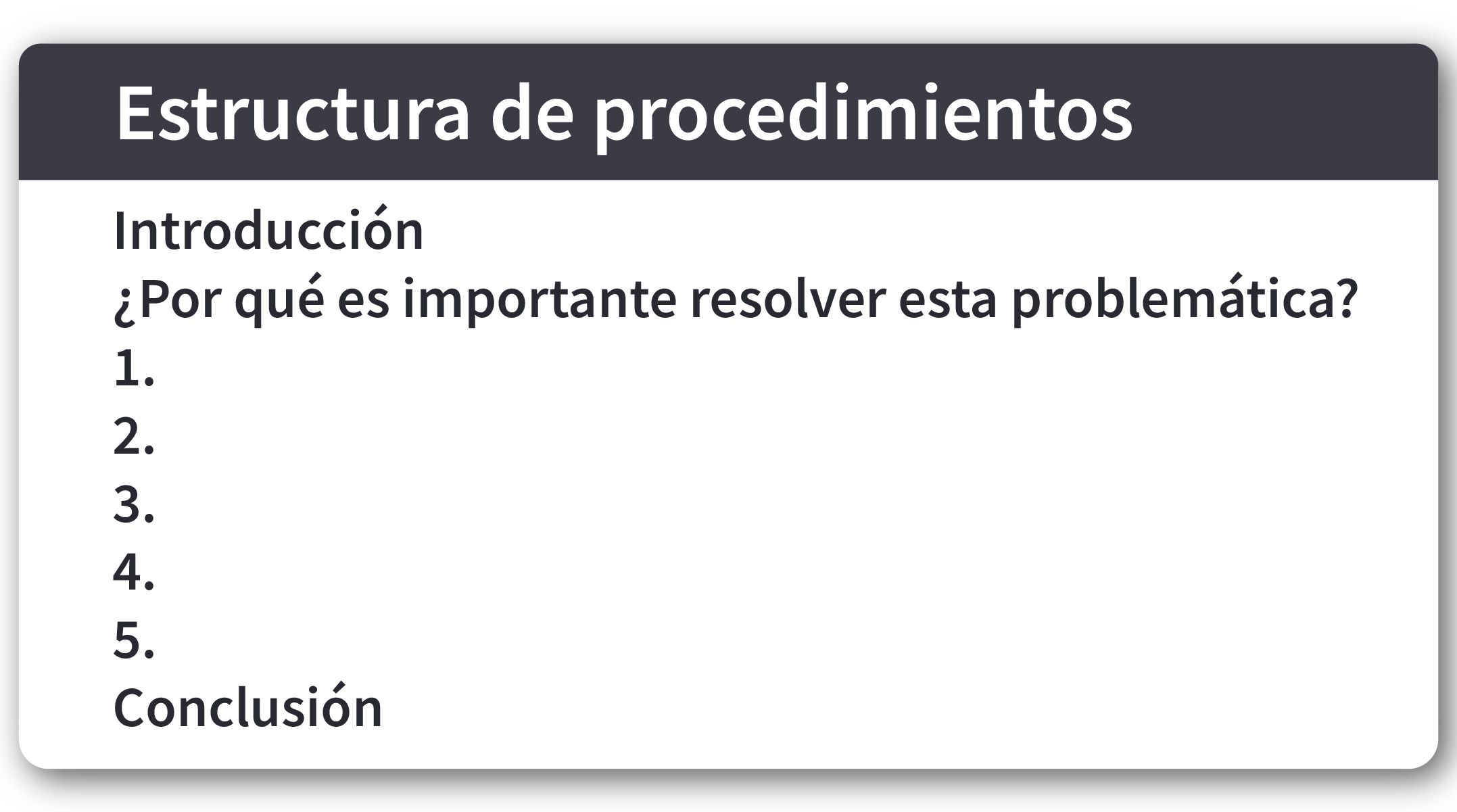The blog is the most important tool for a content marketing strategy, in this blog, you will learn how to start creating a corporate blog from scratch, the types of structures, and the process of creating your first blog entry.
What is a corporate blog?
A corporate blog is an essential marketing tool for your business, it allows you to position your brand in search engines by generating relevant information for the target audience, generating trust and loyalty with your audience by establishing yourself as an expert, and finally attracting more customers by increasing traffic to your website.
However, not everything is easy, despite having great benefits it also requires focusing your efforts on writing and research.

How to create a corporate blog?
Before starting to write your first blog entries you must have complete planning so that everything works according to your objectives, we leave you 9 steps for creating a corporate blog:
1. Define your target audience
The first thing to do should be planning the audience you want to reach, you will need information such as age, sex, personal interests, profession, job, needs, among others. You can have different target audiences, but it will depend on your objective and the work team that will be in charge of carrying it out.
2. Analyze your competitors
Before starting to write you should look for at least 10 different blogs that focus on the same target audience as your company, you should evaluate how they address their audience, what type of structure they use, what topics they generate, how they write their titles.
3. Set a purpose
Blogs can be part of something bigger like a content marketing strategy, it can also function simply as a mechanism to capture emails, retain your audience or convert readers into prospects. You must choose the purpose that best suits the objectives of your company in the short, medium, and long term.
4. Establish a theme
Once the purpose of our blogs is established, you should start looking for topics of interest to the target audience, you must investigate everything related to them and how you can address topics of interest that are related to your company. You should have at least 4 general topics that can be divided into several subtopics so that they can be planned in advance.
5. Use a blog manager
A blog cannot be written anywhere, because a blog attracts traffic, it is the best if your website has a section to generate blogs, this manager must allow you to use multimedia, be multi-device and allow you to add call-to-action or contact forms. Give people the option to subscribe to your blog (If people are not aware of your blog publication because they did not see it on social networks, they can receive an email with the publications of the week).
6. Plan communication channels
You cannot simply write a blog and expect 1000 readers if you do not do some promotional work, you must choose the best channels to communicate the new entries of your blog, you have to take into account those channels that interest your target audience the most, such as Facebook, Twitter, LinkedIn, among others.
7. Establish a work team
A blog is not an easy task, and you should not let any collaborator do either, a blog involves writing, design, SEO, editing, among other things, it is best to have specialized personnel (Writers, SEO specialists, specialists in digital marketing, publishers) so that the results are optimal.
8. Create a posting calendar
You should create a calendar with the publication dates of each topic, always taking into account how long each publication could take to be made, to create a better order it is best to always publish your new entry on the same day of the week.
9. Set metrics
Establishing metrics depends a lot on the purpose of your blog, ask yourself what metric will help me know if I am reaching my goals? In an example, if your purpose was to capture visitor data (Emails) then you must analyze how many visitors in total came to your blog and how many left their data in a certain period of time, with this data you can make an analysis of how many people you need to reach to get more emails.
What can I write on my blog?
There are different types of blogs you can write:
About your products and services
Descriptions of your services and your products, from a technical point of view.
Success stories
You can write descriptions of your success stories, what kind of project you did with your clients, and what has been learned from it.
Educational
You can teach customers what your products are about and how they can use them in their work environments (this is not the same as doing a business description).
Experiences of how our collaborators carry out their work
For example, you can let your accountant write a blog about how he performs his daily tasks or creating an effective chart of accounts, this blog should go through the same process of editing as the other blogs.
Use the simplest content manager, use Odoo Blog
Schedule a free demo
How often should I post a new blog post?
It is important to maintain a frequency in the publication of the entries, your audience must get used to the fact that there will always be something on your page. It is advisable to review your competition and your work team, for example, if your competition generates two blogs per week, but your work team is little, you could generate a single blog per week.
The objective of blogging is not the quantity, but the quality of the information you provide and how much it helps your audience, therefore ask yourself how many blogs you can generate that offer true value to your audience.
Blog structure and reasons why your blog needs structure
Every blog has a structure, this depends on the topic you are addressing, however, there are basic structures that you can use to speed up your work. Here are two basic structures with which you can start publishing your new blog entries:
List structure
In this type of structure, you start with an introduction about what the blog will be about and what the objective of the reading is, then you generate a subtopic telling about the specific topic to be dealt with in the blog, and you list the main points of the article, to finish you generate a solid conclusion that summarizes the blog and is consistent with the objective you set in the introduction.

Structure of procedures
With this structure you can show the procedures that you use in your company to solve problems, you must start with an introduction that states what is the problem to be solved, then a section that answers Why is it important to solve this problem? And in a list provide the details on how the problem can be solved, using as an example the way in which your company solves it, finally generate a conclusion that covers all the aspects seen in the blog.

The process to create a blog post
Having everything established for the creation of a business blog, it is time to start generating blog entries, this takes a structured process and will depend a lot on the purpose, theme, and structure of the work team you have.
1. Do some research on the selected topic
Before starting to write it is important to be documented in the subject, even if the person who will write the blog is an expert in it because there are always updates or other points of view of which they should be informed.
For the research process you should read other blogs that are related to the topic (Read at least 5 blogs on the same topic you want to write about), you can read user comments on the other blogs to be able to give answers to what people ask, or you are in doubt, if it is a technical issue, it is best to generate an in-depth interview with an expert to find out the details.
2. Blog writing
Once the research is done, it is time to start the writing, you must take into account the theme to decide the structure that the blog will take and start writing.
The writing goes through several stages for improvement, this first part is called the first draft, in which you start writing the body of the blog, writing the subtopics that your blog will have following the structure (the subtopics must be marked with an HTML tag < h2 > for better search engine optimization), then start filling in each subtopic with the information you collected during your research when you finish filling the body you should generate a striking introduction for the blog that catches the reader to stay and a conclusion that works as a recount of all the content.
Vauxoo tip: When writing the blog, always keep your target audience in mind, how do you address them in the other communication channels? Do you speak to them in the second or third person? How could you target them to build trust in your brand?
3. First check
At this stage the editor must read the blog and carefully review each section, the editor focuses on the blog having a correct structure, and that the information and internal or external data are correct. After finishing the first revision and if there are errors that the editor has noticed, a second draft should be written, in which the marked errors should be corrected.
4. Second revision
At the end of the second draft, the commentators should check the blog to look for spelling mistakes or errors in the syntax, if there are errors it is the editor's job to solve them to leave the finished blog as a result.
5. Search for keywords
Every blog is aimed at a target audience, but also a blog must be optimized for search engines (SEO) since long-term traffic will depend on where your blog is in the different keywords.
You must generate a list of keywords that are closely related to the topic you are addressing, then investigate the number of visits that each word has per month, using tools such as Google trends y Mozbar podrás conocer a fondo tus palabras clave, con este proceso conocerás cuáles palabras clave son las que debes utilizar y cuáles es mejor no utilizar, inclusive podrás ver ideas de otras palabras clave que guarden relación con tu tópico en estas herramientas y que podrás utilizar para reemplazar las que no funcionaron.
Vauxoo Tip: Las palabras clave junto con la semántica de tu blog son partes importantes para el SEO, intenta dedicarle mucho tiempo a su investigación y a elegir las palabras adecuadas.
Si te interesa conocer más sobre el posicionamiento SEO de tu blog te dejamos este blog post con 8 tips que seguro ayudarán a tu posicionamiento SEO.
6. Genera un CTA que concuerde con el tema
Recuerda que los blogs tienen un propósito, si tu propósito es capturar los datos de los prospectos lo mejor será generar un CTA que les atraiga y les genere confianza para dejar sus datos, aun si tu propósito no es vender puedes incluir un CTA para que se suscriban a tu boletín de noticias y tener personas que esperen tus blogs.
7. Crear los contenidos multimedia que utilizarás en el blog
Para generarles una mejor experiencia a tus usuarios lo mejor es utilizar contenido multimedia dentro de tus blogs, pudiendo utilizar imágenes como complemento en cada sección, crear infografías para resumir puntos o crear videos que resuman el contenido en el blog o que sirvan para complementar algún punto.
8. Montar el blog
Una vez teniendo los recursos necesarios puedes comenzar a integrarlos todos en tu gestor de blogs, comienza organizando la estructura dentro del blog y después rellena con la información que corresponde a cada parte.
Beneficios de crear un blog
Los beneficios que un blog puede traer se pueden dividir en dos tipos:
Beneficios internos
Los blogs corporativos ofrecen como beneficio interno a la compañía tener documentado sus experiencias, sus capacidades, sus formaciones, ya que se genera un banco de conocimientos que cualquiera puede acceder. Pueden ser inclusive fuentes de consultas futuras para capacitaciones internas que se generen, ayudarle a colaboradores nuevos a entender conceptos y escenarios ya planteados en el blog.
Beneficios externos
Desde el punto de vista externo un blog te permite mostrarte como una empresa experta y bien documentada con respecto a los temas de los cuales escribes. Se puede usar un blog para transmitir esa idea de que eres un experto en lo que haces y conoces. Comercialmente puede servirte como una base de referencias, ya que al utilizar los blogs de casos de éxito tus clientes pueden conocer con qué otros clientes has trabajado, cuál ha sido la planeación de trabajo y los resultados obtenidos.
El blog en la estrategia de mercadotecnia
El blog es una herramienta de gran alcance para la promoción, sirve como estrategia para posicionar tu empresa en internet, porque, el contenido que se comparte informa, resuelve dudas y ayuda al usuario y posible prospecto durante cada etapa del proceso de compra. Sobre todo es la herramienta principal del marketing de contenidos, ya que funciona como pilar en las estrategias realizadas.
Odoo blog
Escribir un blog y hacer tus publicaciones online periódicas te brinda muchos beneficios como lo mencionamos anteriormente, sin embargo es necesario que te apoyes de una herramienta para cubrir todos los procesos del antes, durante y después de la redacción del mismo.
El módulo Blog de Odoo es una herramienta potente que le permitirá a los redactores o empresas a desarrollar sus estrategias de marketing de contenidos y crear entradas de blog atractivas donde se integrarán perfectamente imágenes, vídeos, llamada a la acción, citas, banners, etc.
Todo esto sin necesidad de ser un diseñador para crear contenido impresionante y con una experiencia de usuario única. Cada entrada en el blog se verá como si estuviera estructurada y maquetada por un diseñador gráfico.

Ventajas de construir un blog en Odoo
Visualiza mientras escribes
La aproximación única de Odoo de 'edición online' hace que la creación de un blog sea sorprendentemente fácil. No se requiere ningún código, lo que ves es realmente lo que recibes.
Gestión de front end
Has click y cambia el contenido directamente desde la página de tu blog, no tienes que lidiar con código o configuraciones complejas.
Procesador de palabras, edición de texto
Crea y actualiza el contenido de tu texto a través de un editor diseñado para replicar la experiencia del procesador de palabras.
Autoría
Selecciona fácilmente el nombre de un compañero de trabajo para otorgarle la autoría de la publicación del blog.
Mantén un diseño responsivo
Lee las entradas de tu blog favorito en cualquier momento y lugar. Tu blog está incorporado en el Sitio web de Odoo, así que funciona perfectamente en dispositivos móviles, tabletas y computadoras de escritorio
La creación de un blog corporativo te traerá grandes beneficios con respecto a cómo el público verá tu marca. Siempre ten en cuenta a tu público, tu propósito y la temática al escribir un blog, con la finalidad de generar un recurso invaluable.